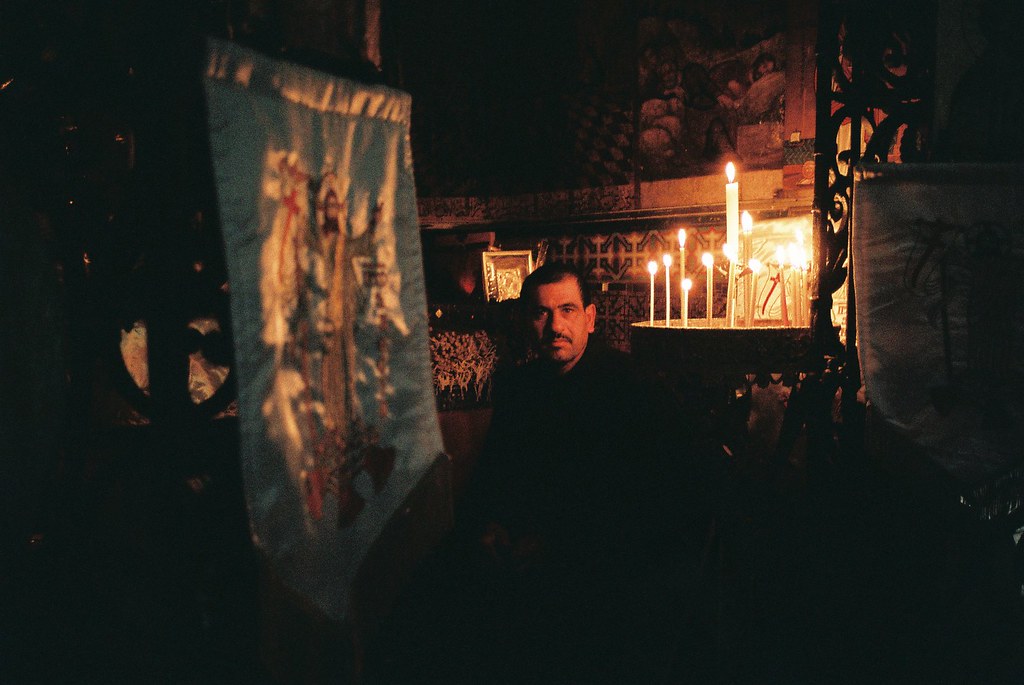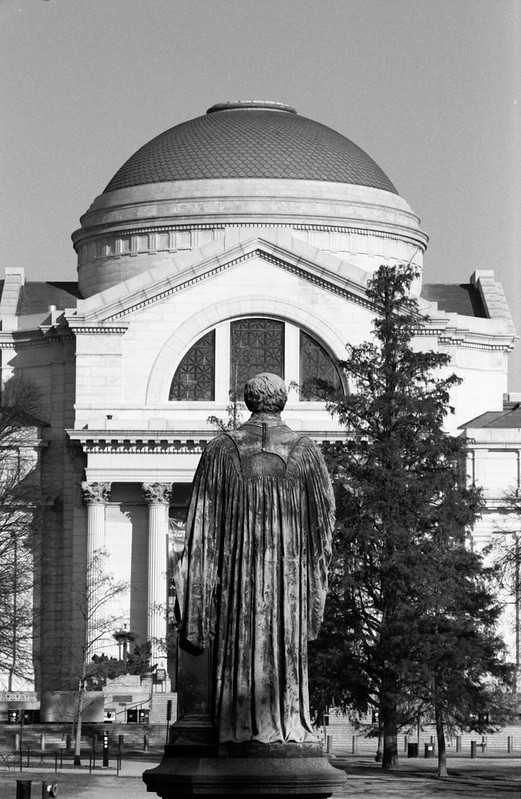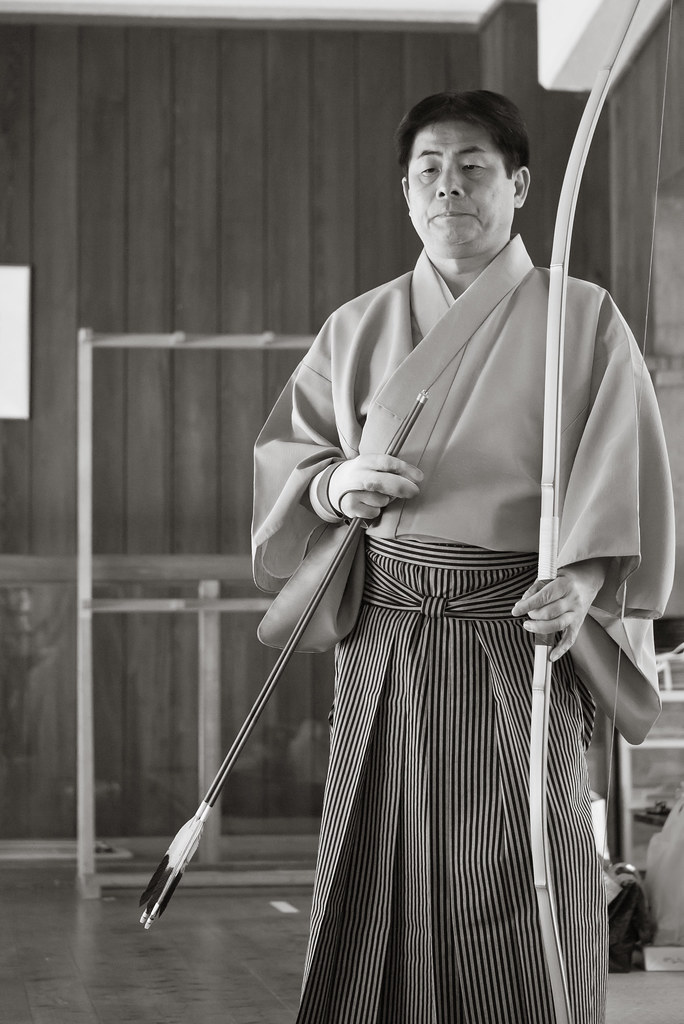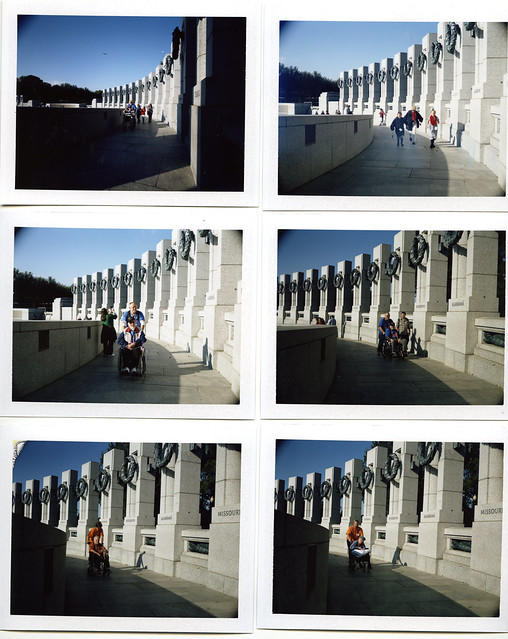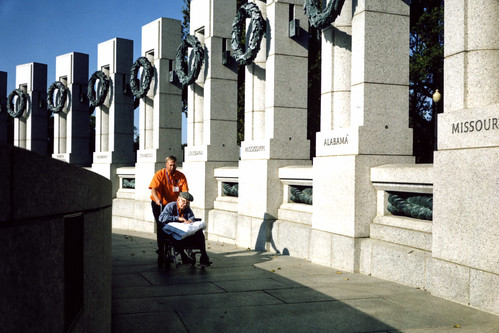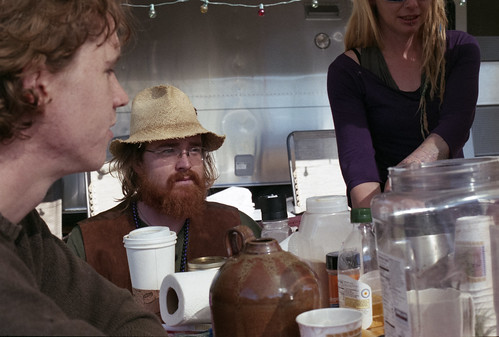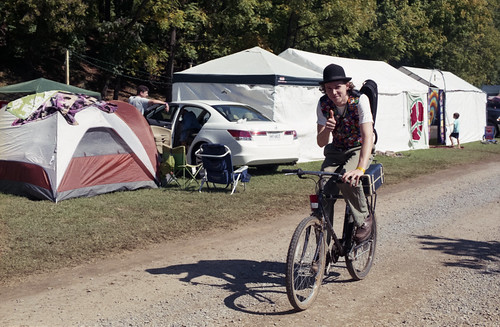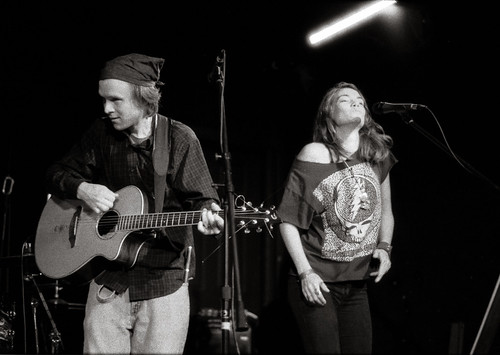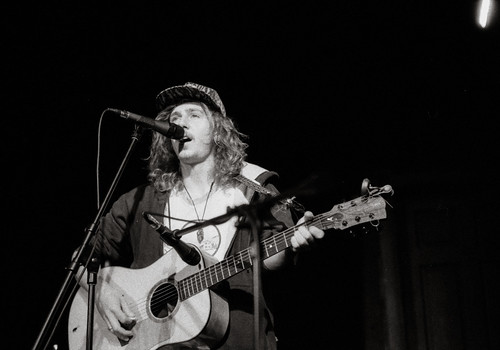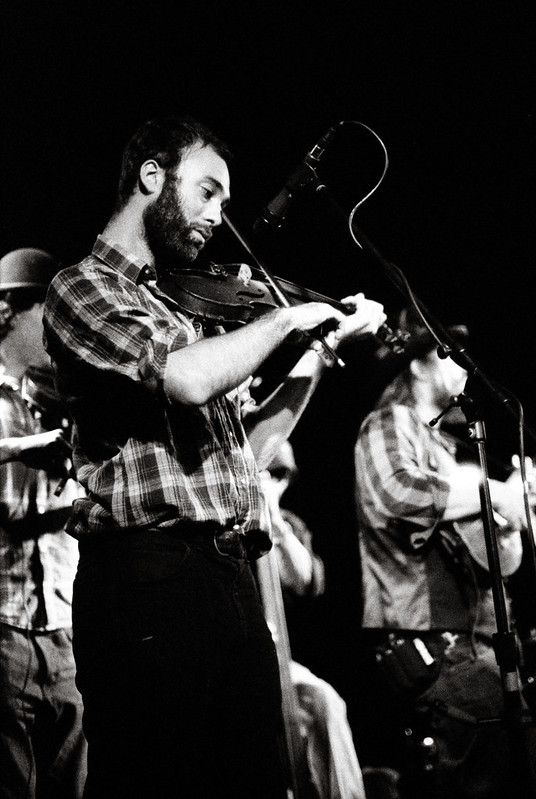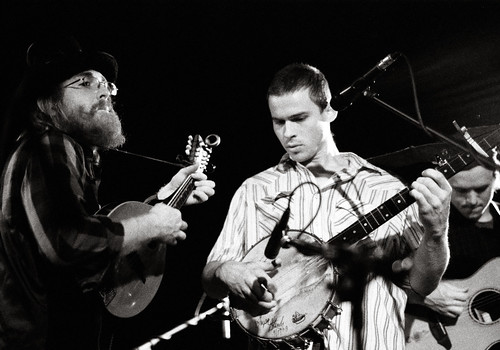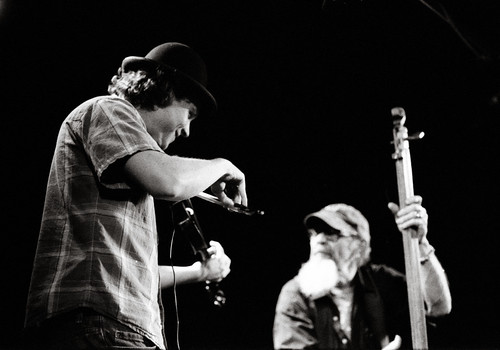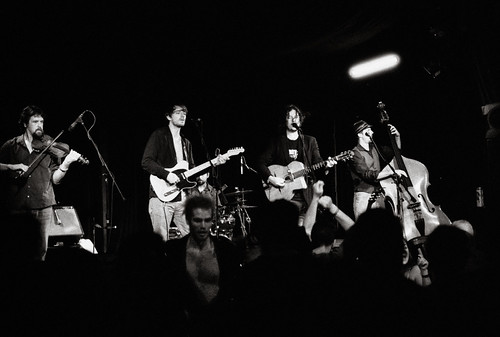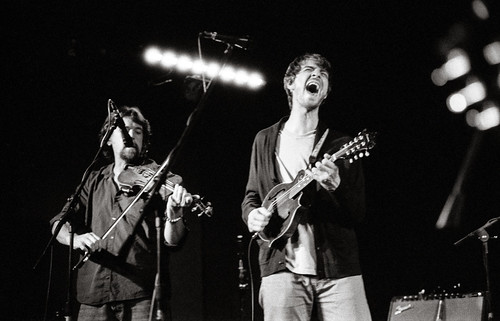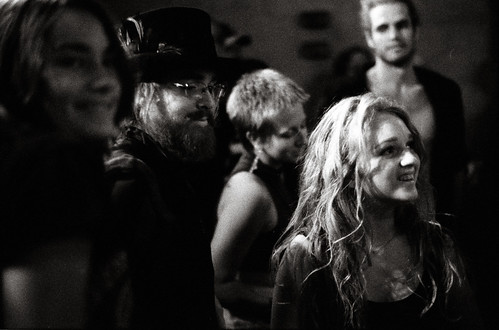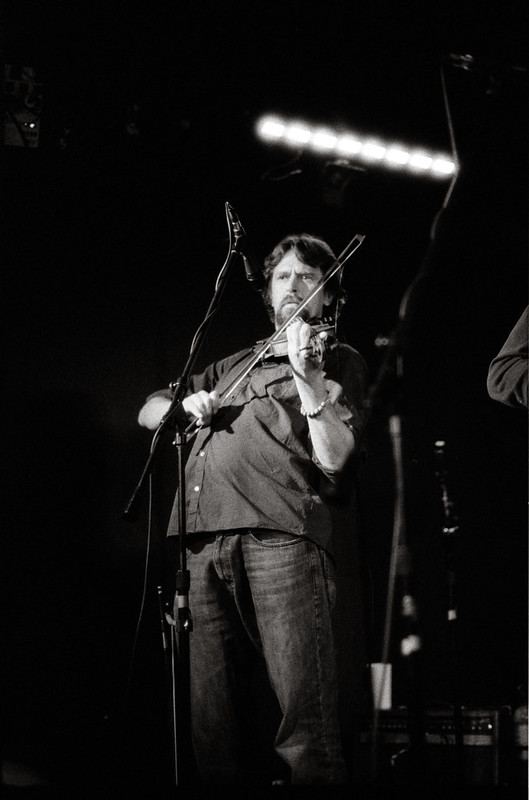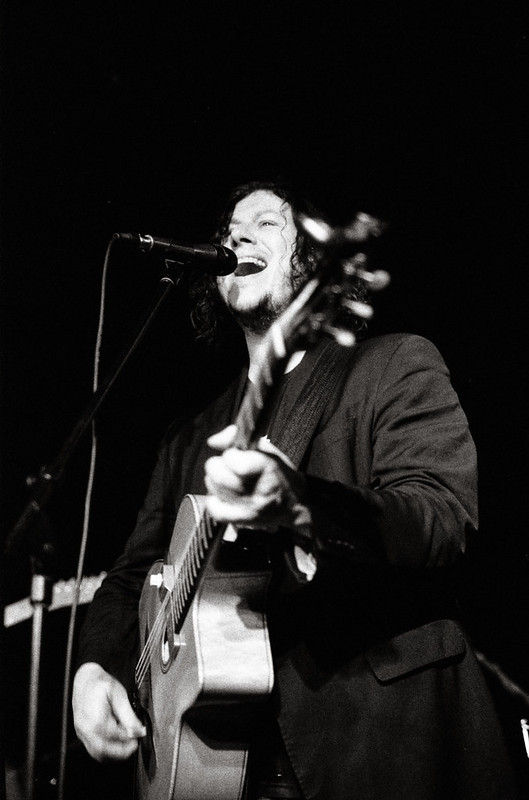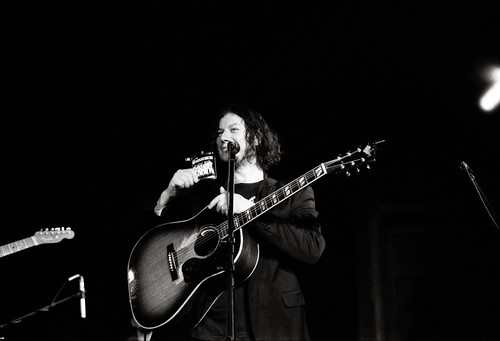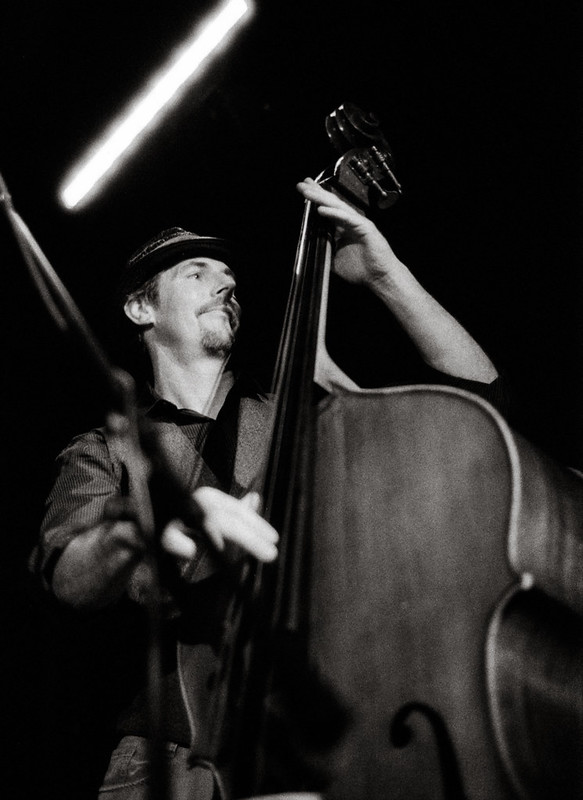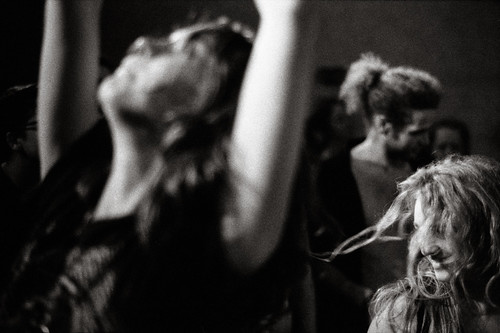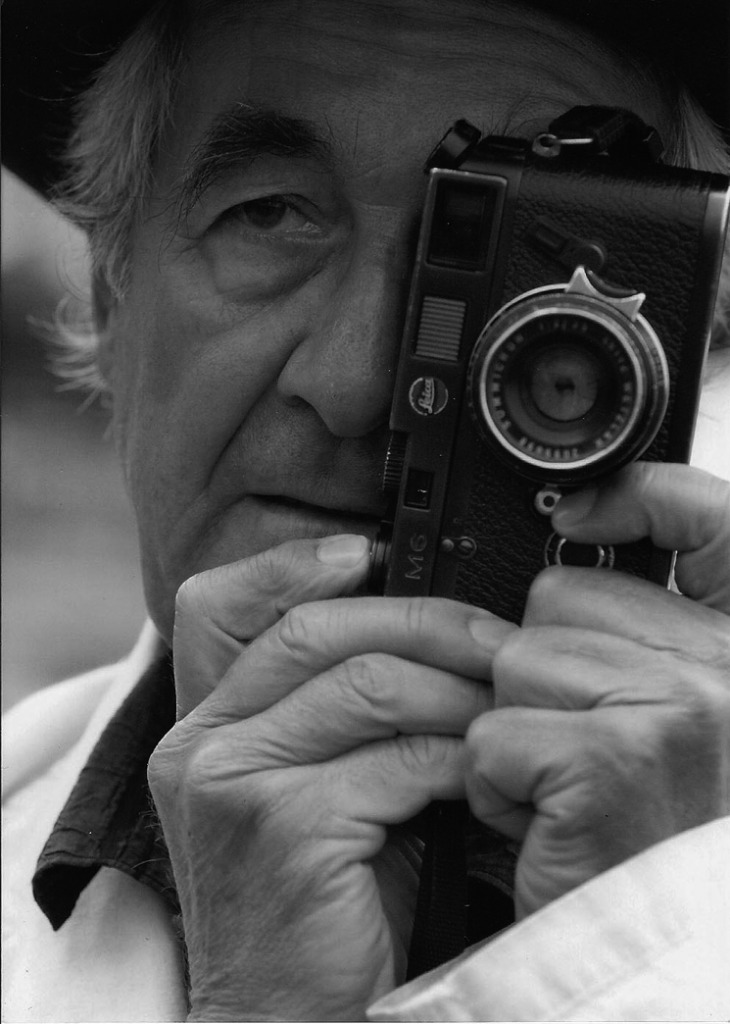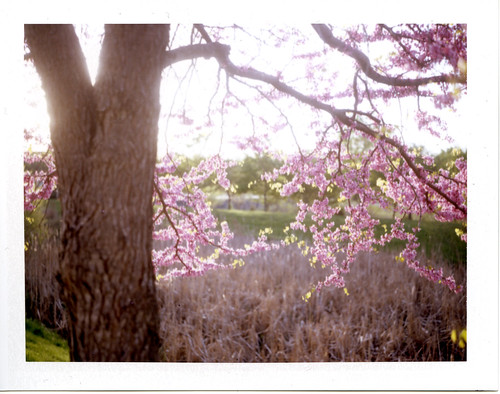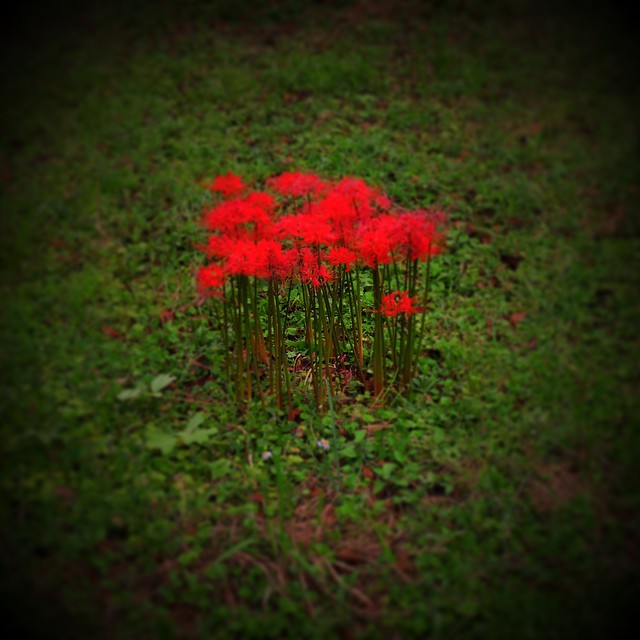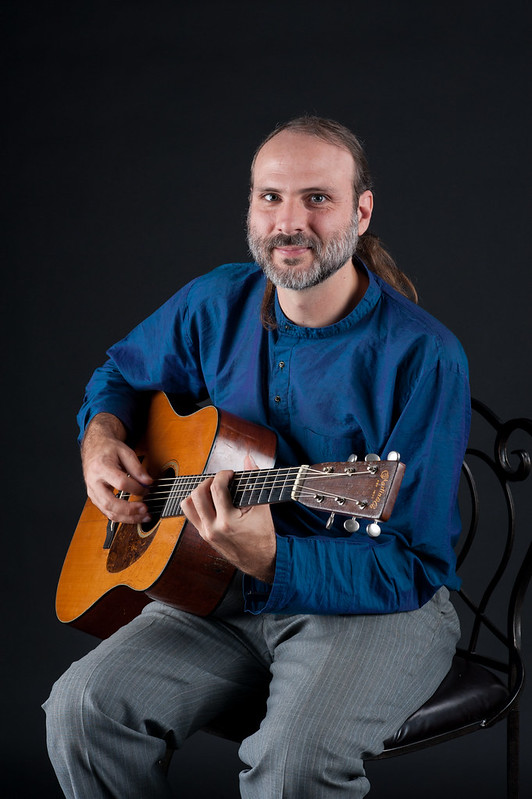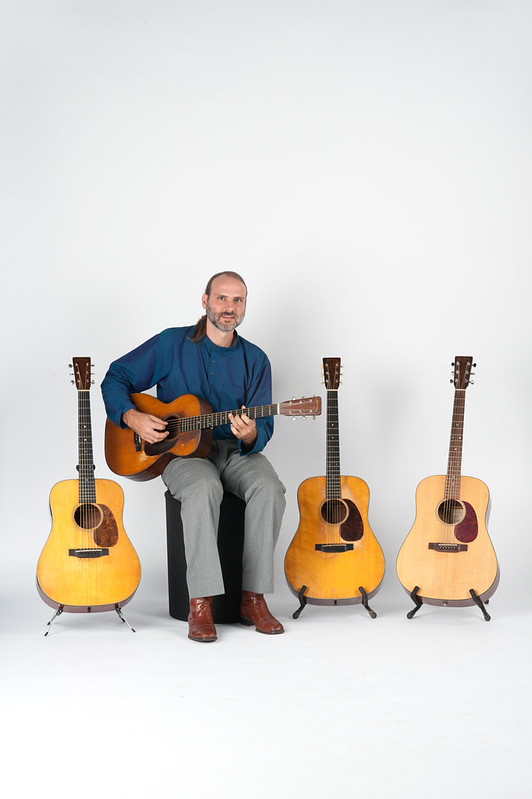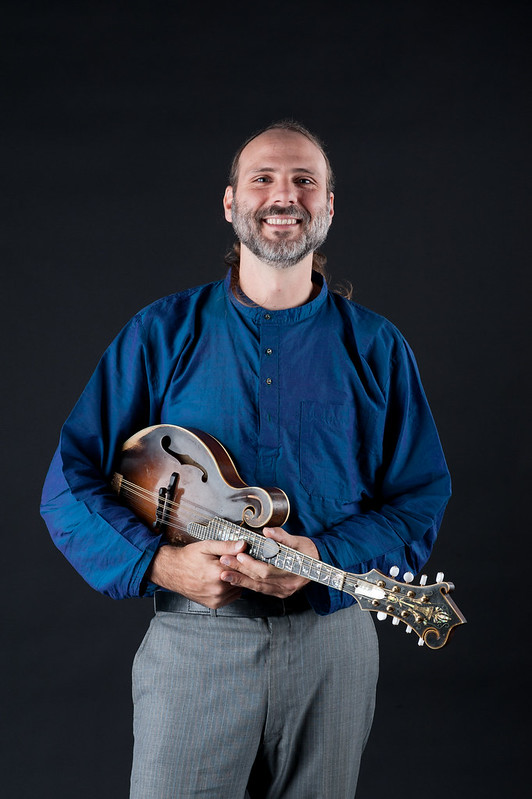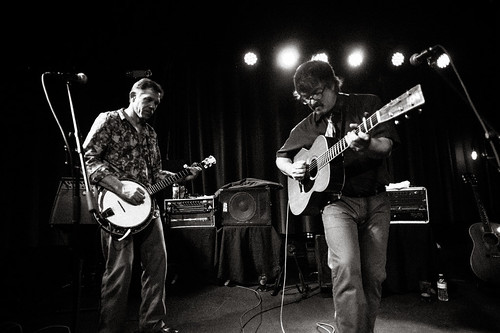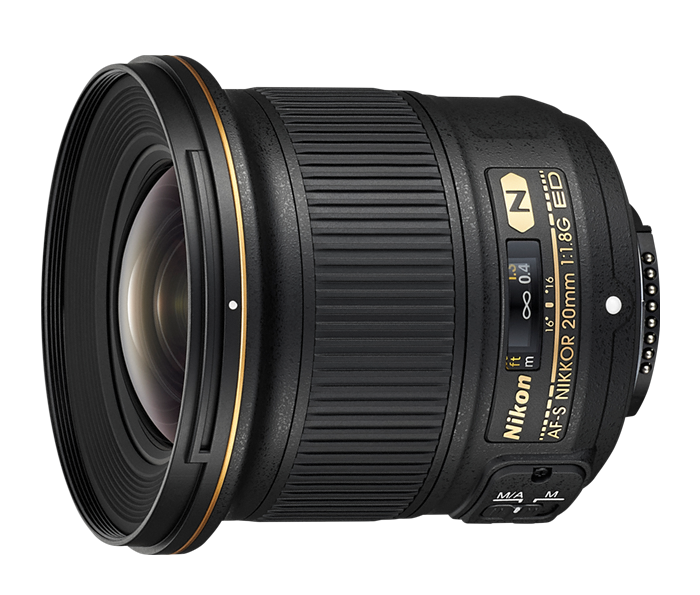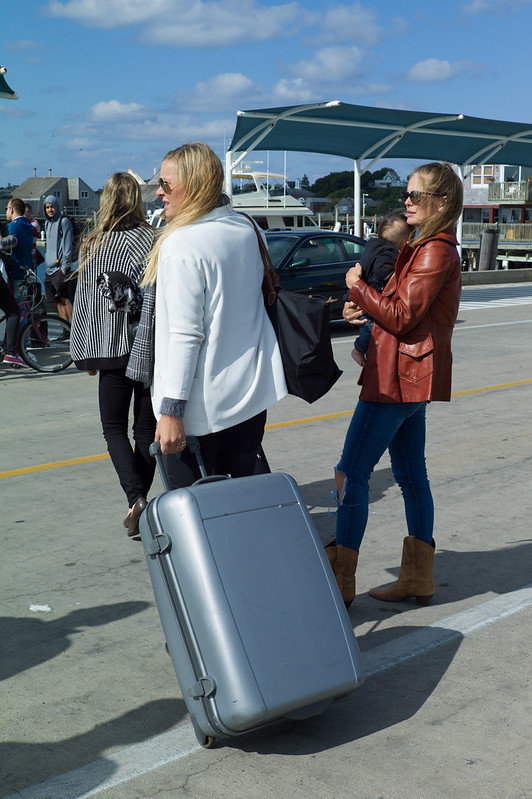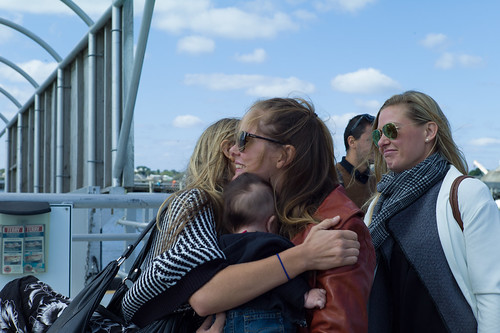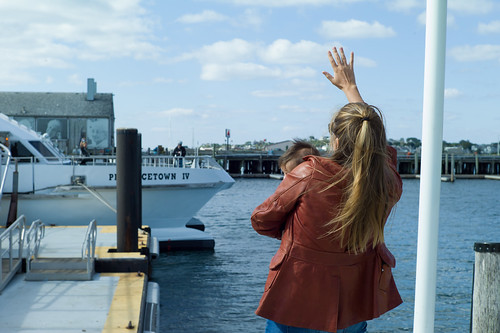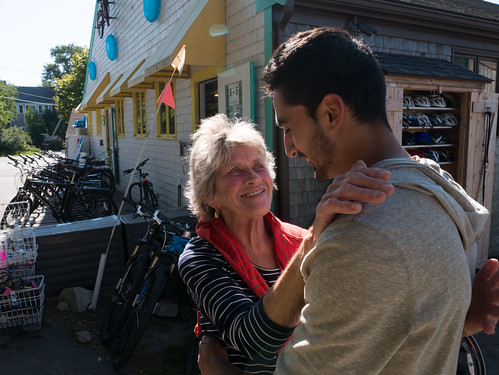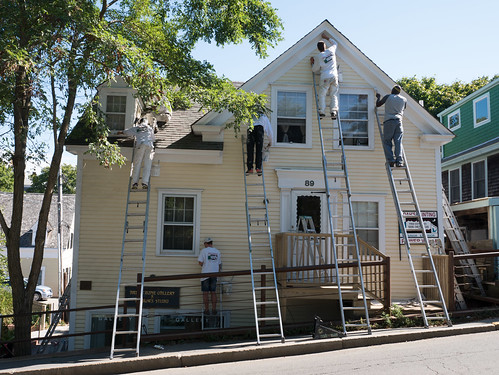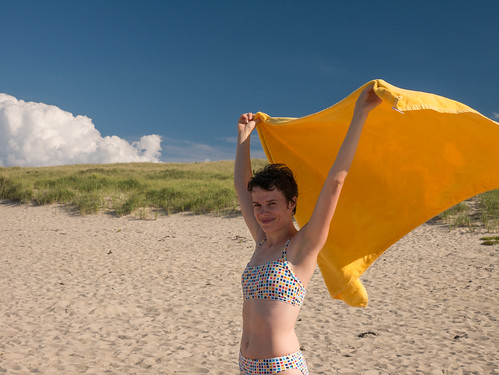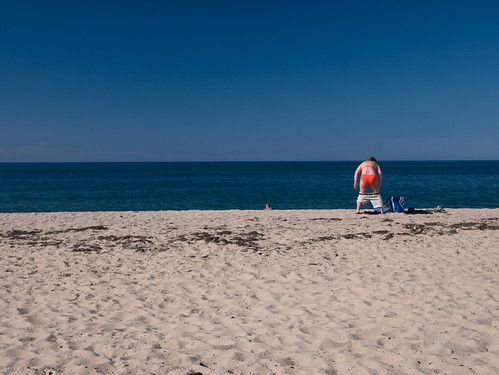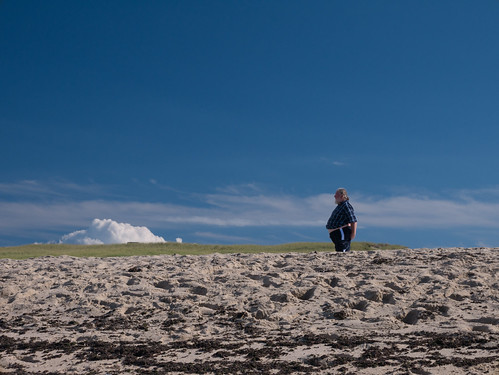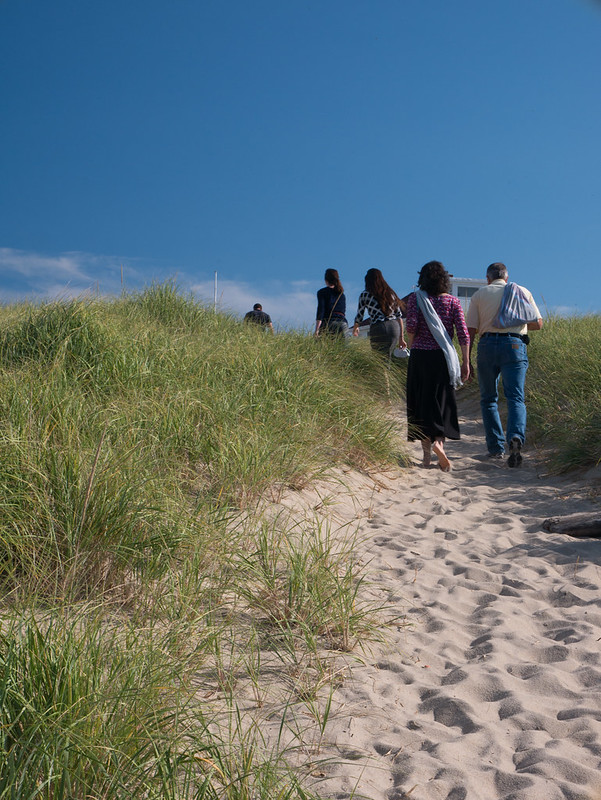Okay, at the end of Day 4 I felt pretty confident. I had a few images from the beach and the ladder shot, which reasonably tied in to my "end of the season" in Ptown theme. DAH selected a couple of the images, didn't like the beach exit picture I posted yesterday, and told me frankly that I had more work to do. He did suggest that I head back to the beach to see what else I could make of that.
I had in the back of my mind that I may once again find the surf fishermen, but that didn't happen.
I threw my Lumix GX7 over my shoulder, grabbed lunch to go in a bag, and biked back out to the shore. I went to the places I'd been the day before, met and talked with a few different people on the beach, and even got a young couple to let me shoot their relaxing day in the sand. None of these made it past my own filter.
Making a long loop ride around the seashore as shown below, I ended up at a bike shop near the west end of town.
Original Map Source: http://www.visit-provincetown.com/wp-content/uploads/2013/03/parkingPtown.png
Sort of out of options after leaving the beach with no real good additions to show for my efforts, I decided to act on DAH's advice to find a spot and let the image develop. The bike shop had lots of "Sale" signs up, indicating the end of the season. The deli inside the store was already closed for the season, and I photographed that, but not to much effect.
Going back outside, I noticed one of the shop employees working there. I struck up a conversation, and found that he himself was a sign of the change of seasons in town. Having come to Ptown for the summer from Bulgaria, this young man was preparing to return home in a couple of days. While he had enjoyed Ptown very much, working very long hours (90 hours per week!), he was looking forward to getting home to see his family. I asked where he had lived during the summer, and he told me he'd shared a space with two other people on the property. Asking if I could photograph his room, he told me that he was not allowed to bring guests in. And, he was working at the moment, anyway.
Having to pursue it further, I asked him if he could grab his suitcase, and let me photograph him walking out the door of the shop. Not exactly what I wanted, and staged for sure, it would have at least been something. He politely told me that he'd already been on break that afternoon, and wasn't allowed to take another. I asked him if I could request that his boss make an exception. He replied that his boss himself was on break, and not available. He would not be back for about 30 minutes. I said I'd wait.
Now at this point, it was clear that I was pushing hard, and quite possibly had outstayed my welcome. This guy was extremely nice, but was getting a little uncomfortable about my persistence. Anyway, I decided to wait it out.
Sitting on a picnic table in front of the store, waiting, I shot a couple of pictures of people coming and going, but nothing with a story. And then it happened. A lady from the neighborhood who'd befriended this young gentleman over the summer came to say goodbye before he left to return to Bulgaria. She hugged him, and told him how much she enjoyed knowing him. Real emotion, finally! I asked her permission to photograph them together, and she happily obliged. Here's the one shot I got from a few hours of pursuit:
Goodbye My Friend
This one shot made it all worthwhile. In fact, it was the only useful image I got the entire day.
That evening back at the Fine Arts Work Center (FAWC), Costa Manos was our featured speaker. Like Bruno Barbey, Costa has been with Magnum for 50 years. Costa was the main motivator for the Magnum Days in Provincetown program. Costa walked us through his amazing career in photography, beginning with his early coverage of a South Carolina island known as Daufuskie. This was where Costa made his first "serious" image, in 1952.
(
Click Here) to see that image on the Magnum website.
It is an amazing image. In fact, it haunted me. Haunted me to the point that I purchased a limited edition print of it. I am not an art collector, but I really wanted to have this image to put on my wall as a reminder of the workshop, meeting Costa, and all of the other great people involved in the workshop.
DMC-365.blogspot.com
